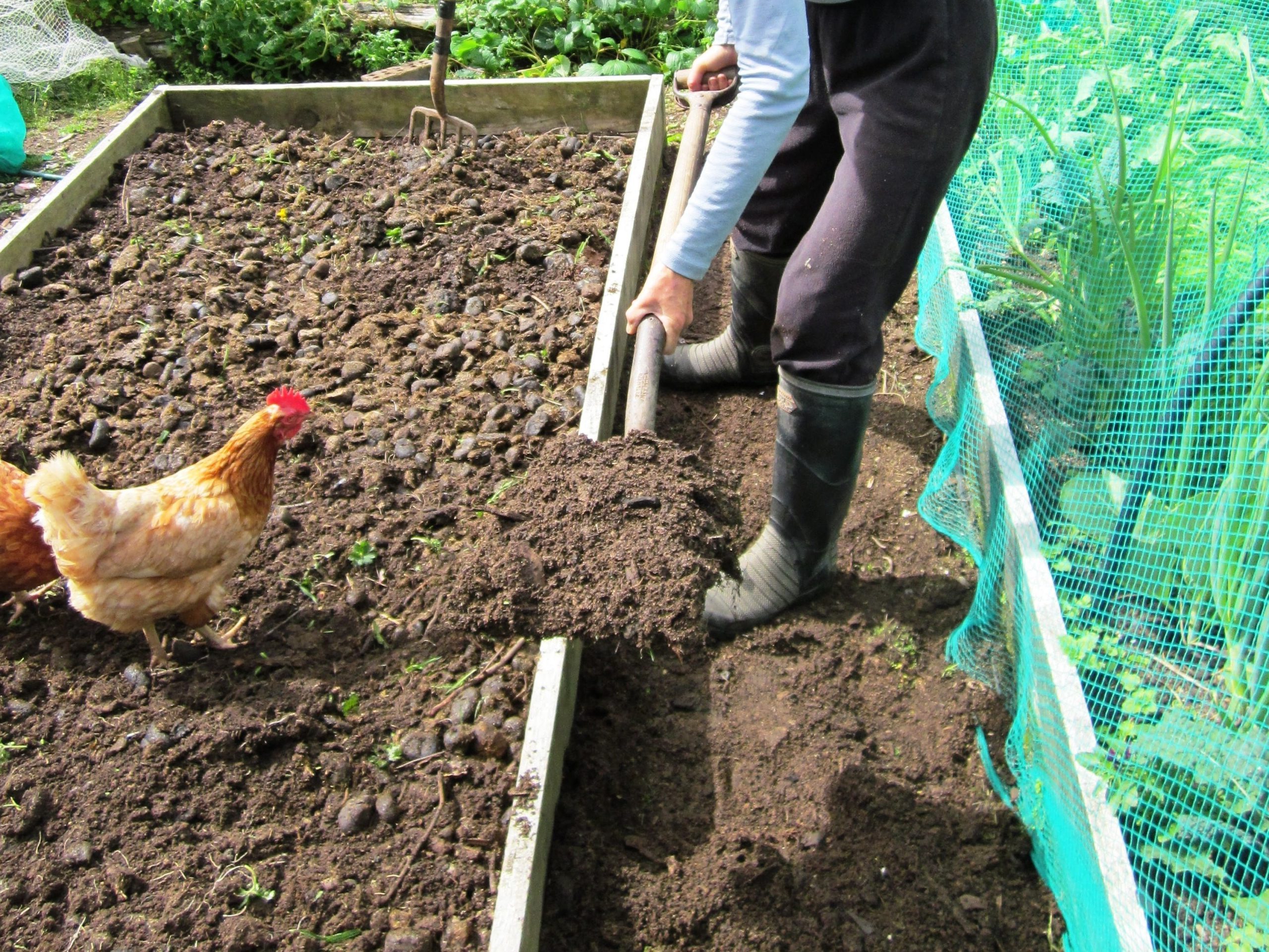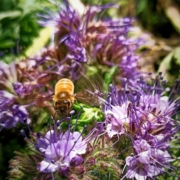Get ready for spring: seasonal gardening tips and tasks
Tips and tasks for the July/August māra,
by Diana Noonan
We hope you enjoy this free article from OrganicNZ. Join us to access more, exclusive members-only content.
Tohea! Ko te tohe i te kai –
Be strenuous – it is a struggle for food.
While the the days are short and nights are cold, there’s still so much we can do to make sure our gardens are in the best possible state to enter the growing season. From clearing out pest insects and adding nutrition to the soil, to encouraging the earliest food-bearers, and even sowing some super-hardy vegetables, winter is a much more active gardening season than you might imagine!
Bring in the birds
Birds are one of our greatest assets in the organic garden, especially in winter. They come into my garden in flocks and return again and again to devour overwintering pest insects such as spider mites, aphids, mealy bugs, caterpillars, and scale insects.
Silvereyes appear to be especially deadly hunters, gobbling insects all day. To take advantage of their appetites, I make sure that all nets are removed from berry bushes and fruit trees and sections of the garden that don’t require protection from rabbits and possums.
If conditions are dry enough in the garden, use a rake to disturb mulches. This exposes pests such as grassgrub, slugs, snails, and their eggs, and allows other birds, such as thrush and blackbirds, to discover them. I scratch around the base of my fruit and nut trees with a rake to achieve the same results. Providing bird baths and feeding tables will encourage even more birds into your garden.
Dig in!
Towards the end of winter, if the ground is dry enough, I take the opportunity to dig my green manure crops (also known as cover crops) into the soil. In my garden, these are lupin, vetch, grain, or tick beans, the seeds of which I sowed en masse in autumn.
These plants take 6-8 weeks to break down in the soil, so digging them in now means they will be ready to provide nutrients to spring-sown plants. I dig my green manure crops to a depth of just 10-15cm (I want to disturb the soil as little as possible), turn them over, and lightly chop them back into the ground. If the weather is horribly wet, I’ll cover the bed with black plastic to protect the soil while the goodies decompose.
Sow early!
In winter, it’s not so much what early seed we sow, but how we sow and protect it, that’s important. Birds are more desperate for food in winter than in any other season, so netting or covering what you sow is essential. I always cover small seed (such as spinach and mesclun mixes) with clear plastic, raising it a few centimetres off the ground with the help of narrow boards.
This keeps the plastic just high enough to trap the heat beneath, hurry along germination, and let the seedlings develop their first true leaves. After that, it’s on with the bird netting.
To combat the winter wet, I sow smaller seed into slightly raised rows to assist with drainage and cover them, to the recommended depth, with light, dry, soil or friable compost.
In warmer months I always soak larger, more robust seed, such as pea and broad bean, before sowing to hurry along germination, but I never do this in winter. In winter, soaking the seed often causes it to decay in the already-damp ground before it has time to sprout. And even though the seed is larger, it is also netted.

Sow me now
Flowers
In warm and mild regions (undercover or outdoors in seed trays or individual pots, depending on location): foxglove, hollyhock, bachelor’s button, cosmos, evening primrose, echinacea, marigold, nasturtium, statice, sunflower, sweet pea.
In cold regions: As for warm and mild regions but sow into seed trays and place on heated propagation mats.
Herbs
In warm and mild regions (undercover or outdoors in seed trays or individual pots, depending on location): basil, chervil, dill, fennel, marjoram, mint, parsley, thyme.
In cold regions: As for warm and mild regions but sow into seed trays and place on heated propagation mats.
Veges
In warm and mild regions (outdoors): Asian greens, broad and dwarf beans, beetroot, broccoli, cabbage, carrot, cauliflower, green manure crops, lettuce, parsnip, onions, potato, radish, rocket, silverbeet, spinach, spring onion.
(Undercover in seed trays or individual pots): aubergine, celeriac, capsicum, cucumber, celery, leek, melon, pumpkin, tomato.
In cold regions (undercover or outdoors, depending on location): brassica, broad beans, cool season microgreens, lettuce, peas, pea shoots, perpetual spinach beet, silverbeet.
(Undercover, in seed trays or individual pots): chili, capsicum, sweet corn, tomato
Healthy herbs
Some of the very first ‘greens’ to come through the soil toward the end of winter are hardy, tasty herbs. Chives, marjoram, fennel, and sorrel are longed-for flavour boosters in my late winter garden and I lavish attention on them. I make sure to mark their whereabouts in autumn (as some all but disappear beneath the ground as the days shorten), and toward the end of winter I clear the sites of fallen leaves and other debris.
I carefully scratch away any weeds, and mulch around (but not over) the spots. I pop a cloche (a cut off plastic soda bottle) over the delicate foliage as it emerges to lock in the heat and protect it from browsing animals.
I harvest cautiously at first, to keep the growth coming, and more vigorously after 2-3 weeks, as these ‘earlies’ are often the first edibles to run to seed.
Gear-up the greenhouse
If you’re lucky enough to have a greenhouse, this is the time to press it into service (if you don’t have a greenhouse, you can build a simple cloche from hoops of willow pushed into the ground and covered with clear plastic held down with a brick at each end). Whatever you do, don’t wait until the start of spring to raise your seedlings. It can take from 3-8 weeks, depending on what kind of seed you sow, before a seedling is ready to transplant. Wash down the greenhouse inside and out to let in more light, and remove any overwintering plants that may be hosting pest bugs (be sure the bugs don’t drop off inside the greenhouse as you shift them).
Set up staged shelving to hold your seed trays (staged shelving is similar to a set of steps, and allows all seedling equal access to the light). Cover seed-raising containers with a sheet of glass to stop mice scratching them up in search of food, and once the seeds have germinated, check nightly for signs of slugs and snails.
Don’t forget to keep the greenhouse door shut to keep out the birds.
Bare necessities
It’s fruit and berry planting time, and the best deal is to purchase those that are bare-rooted.
Bare-rooted plants are dug straight from the soil while still dormant. Their roots are wrapped in a covering to stop them drying out. Bare-rooted trees and bushes have a better start in your garden than potted plants, the roots of which are likely to have been restricted for many months. Niche nurseries often specialise in bare-rooted plants so you usually have a great choice of variety.

Transplant me now
Flowers
In warm and mild regions: alyssum, Canterbury bells, dianthus, delphinium, gypsophilla, larkspur, marigold, sweet William, sweet pea, viola.
In cold regions (where conditions permit): alyssum, gypsophilla, larkspur, marigold, sweet pea, sweet William.
Herbs
In warm and mild regions: mint, parsley, rosemary, sage, thyme.
(Under cover or when danger of frost has passed): basil and lemon grass.
In cold regions: chives, parsley, rosemary, sage, thyme.
(Under cover): marjoram.
Veges
In warm and mild regions: asparagus crowns, broccoli, cabbage, cauliflower, lettuce, onions, silverbeet, shallots, strawberry.
In cold regions (undercover, in planter bags that can be moved outdoors when space is required): brassica, celery, hardy lettuce, perpetual beet, rocket, silverbeet, spinach.
Diana Noonan lives in the Catlins where she grows 70 percent of her food using a variety of methods including permaculture food forest to French intensive.





